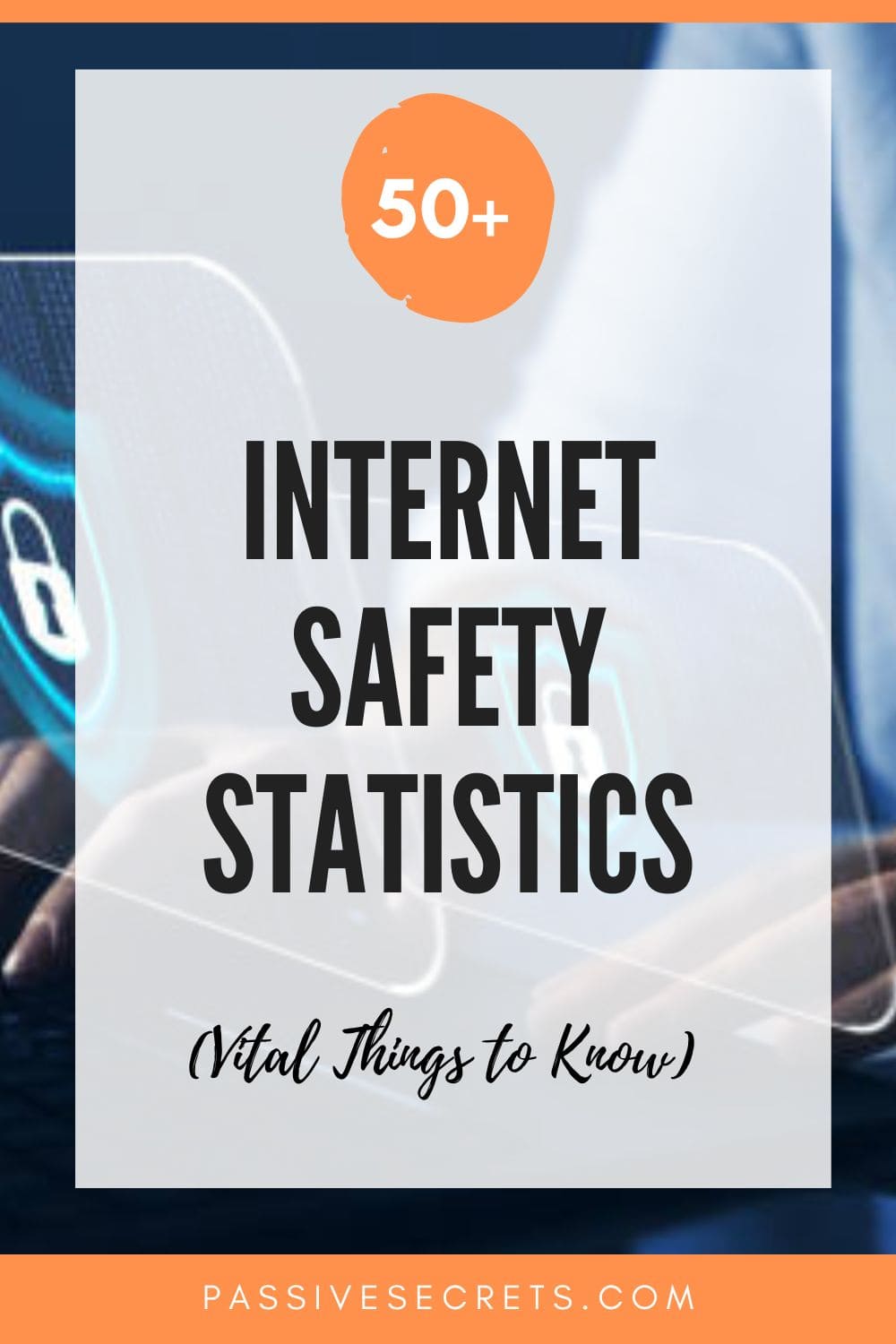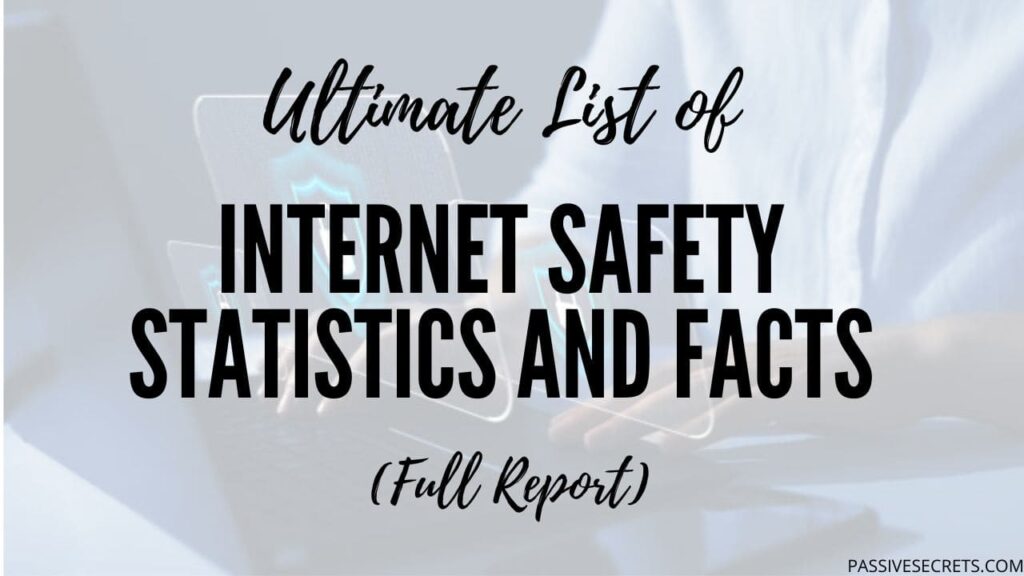
Although the internet has made life easier, we cannot overlook its dark side. We need to protect ourselves from its consequences.
Over the years, the internet has become dangerous, even for kids and adults. Cybercrime and other internet dangers are growing by the day.
Hence, there is a critical need to ensure safety for our kids, families, and businesses. Staying away from these dangers will help you protect yourself from unforeseen internet hazards.
A look at these internet safety statistics will show you how the world sees and approaches online safety. You’ll also see possible measures taken to fight against internet dangers.
Key Internet Safety Statistics
- 33% of kids between the age of 10-12 and 57% of teenagers have attempted suicide due to the information on the internet.
- 25% of Americans detected unauthorized access to their social media accounts or devices in the past 12 months.
- 91% of children between the ages of 12 and 15 have been spoken to by a parent about internet safety.
- 88% of Americans are concerned about data privacy, and 86% have actively taken steps to hide their online footprint.
- Cybercrime victims spend a total amount of close to 2.7 billion hours trying to resolve their issues.
- 56% of Americans admit that it is difficult for them to determine if information on the internet is from a credible source.
General Internet Safety Statistics
1. 62% of US adults believe it is impossible to go through their daily lives without companies collecting data about them. (source)
2. 38% of US adults believe that it is possible to go through their daily lives without information being collected about them from companies. (source)
3. 63% of adults in the US believe that it is impossible to go through their daily lives without the government collecting information about them. In comparison, 36% of US adults believe that it is possible. (source)
4. 81% of US adults are concerned about how companies use the data they get about them on the internet. (source)
5. 71% of adults in the US are concerned about how companies use their data. (source)
6. 67% of people have little to no understanding of what companies do with the data they collect about them. (source)
7. 77% of people have little to no knowledge about what the government does with their data. (source)
8. 72% of Americans say that there should be more regulation from the government concerning internet safety, and 7% of Americans say there should be less. (source)
9. In the second quarter of 2023, there were nearly 31,000 cases of consumer fraud as a type of cybercrime. (source)
10. 42% of UK internet users have experienced counterfeit good scams as a result of a lack of internet safety. (source)
11. 66% of internet users in the UK believe that being online has more advantages than disadvantages, 23% were indifferent about this statement, and 8% disagreed utterly. (source)
12. Since the COVID-19 pandemic in March 2020, social media consumption and use of messaging services has increased by 40%. (source)
Statistics On Internet Safety Demographics
13. 67% of kids between the ages of 10-12 and 76% of teenagers have been exposed to bullying, whether as the bully, witness, or victim. (source)
14. 58% of kids between the age of 10-12 and 75% of teenagers have encountered content that has sexual information on the internet. (source)
15. 58% of kids between the age of 10-12 and 77% of teenagers have been exposed to information concerning drugs and alcohol. (source)
16. 68% of kids between the age of 10-12 and 82% of teenagers have been exposed to violence. (source)
17. 8% of kids between the age of 10-12 and 10% of teenagers have encountered predatory behaviors from someone online. (source)
18. 26% of kids between the age of 10-12 and 38% of teenagers have been exposed to depression because of the information on the internet. (source)
19. 33% of kids between the age of 10-12 and 57% of teenagers have attempted suicide due to the information on the internet. (source)
20. One in six people were victims of online sexual abuse before the age of 18. (source)
21. 91% of children between the ages of 12-15 years have been spoken to about internet safety by a parent. (source)
22. 73% of children between the ages of 8-11 years have been spoken to about internet safety by a teacher. (source)
23. 2 in 10 children between the ages of 16-17 years have been spoken to about internet safety by the police. (source)
24. 44% of millennials and 51% of Gen Zers are likelier to say they have experienced a cyber threat than 21% of baby boomers. (source)
25. 25% of millennials and 24% of Gen Zers have had their identities stolen, as opposed to only 14% of baby boomers. (source)
26. 79% of baby boomers claim to have never had any experience with the lack of internet safety or been a victim of cybercrime. (source)
Statistics On Internet Safety Measures
27. Seven out of ten internet users in the UK use strong passwords on their devices to secure internet safety. (source)
28. 51% of internet users use fingerprint or facial recognition technology to access their devices and apps on the internet. (source)
29. 15% of UK citizens aged 55 and older delete their browsing history or cookie cache daily. (source)
30. 11% of UK citizens between the ages of 16 and 24 delete their browsing history and every digital trace regularly. (source)
31. 65% of victims of online abuse were unhappy with the response they received from companies on the internet, while 16% of victims of online abuse claimed to be happy with the response they got. (source)
32. 27% of UK citizens spend up to 20% of their time online using virtual private networks (VPN). 11% of UK citizens also started browsing the internet exclusively via VPN. (source)
33. 30% of citizens in the UK feel skeptical whenever they notice a website is tracking their personal information, and 22% feel nervous about this. (source)
34. 25% of Americans detected unauthorized access to social media accounts or devices in the past 12 months. (source)
35. Nearly 330 million people in 10 countries have experienced cybercrime in the past 12 months. (source)
36. Cybercrime victims spend nearly 2.7 billion hours trying to resolve their issues. (source)
37. 76% of people believe that remote jobs have made people more vulnerable to hackers and cybercriminals. (source)
38. 99% of Americans who detected unauthorized access to an account or device took some action to better cyber safety. (source)
39. 66% of Americans who have experienced cybercrime create strong passwords to ensure internet safety. (source)
40. 33% of cybercrime victims turned to their families for help, while 18% invested more in security software. (source)
41. 88% of Americans are concerned about data privacy, and 86% have actively taken steps to hide their online footprint. (source)
42. 55% of people created stronger passwords, and 40% limited the information they shared on social media just to ensure internet safety. (source)
43. 40% of Americans admit that they don’t know how to protect themselves from cybercrime, and 46% would have no idea what to do if their identity was stolen. (source)
Statistics On The Effects Of a Lack of Internet Safety
44. 70% of parents believe that parenting is now more complicated than it was 20 years ago due to the influence that the internet has on kids through social media and various unsafe content. (source)
45. In 2022, 800,944 cybercrimes were reported in the US, lower than in 2021- 847,400. (source)
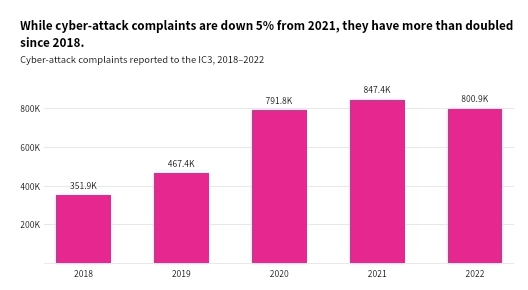
46. Financial losses due to cybercrime in 2022 rose nearly 50%, from $6.9 billion to $10.3 billion. (source)
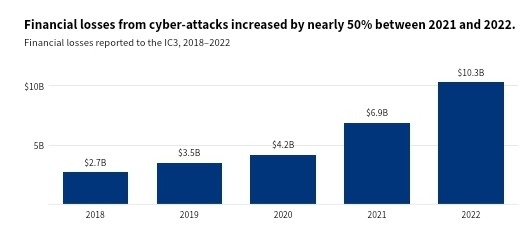
47. Phishing is the most frequent form of cyber attack, as it targeted 300,497 victims in 2022 and represents about 41% of total crimes reported on the internet. (source)
48. Adults aged 30-39 were the most affected by cyber crimes, as 94,506 individuals complained about it in 2022. (source)
49. Online scams involving fake investments resulted in over $3.3 billion lost assets in 2022, which is roughly one-third of total losses. (source)
50. 59% of Americans are worried about becoming victims of cybercrime. (source)
51. 56% of Americans admit that it is difficult for them to determine if information on the internet is from a credible source. (source)
Final Thoughts
In general, internet safety is about being aware of the risks associated with using the internet and taking steps to protect yourself.
While the internet can be a valuable and enjoyable tool, it’s important to remember that there are risks associated with using it.
This means that people have to be super cautious about the information they share online. They should also be conscious of the potential dangers of using social media, online banking, and other activities.
It is fundamental to be mindful of the devices you use to access the internet and to take steps to keep them secure.
Overall, internet safety is about being vigilant and proactive rather than taking a chance and hoping for the best.
FAQs
1. What are the Significant Dangers of the Internet?
- Online scams
- Cyberbullying
- Inappropriate content
- Identity theft
- Phishing scam
2. What are Crucial Internet Safety Rules to be Aware Of?
- Always use strong passwords
- Enable multi-factor authentication (MFA)
- Only click on websites that seem credible
- Review your privacy settings.
- Do not accept privacy policies without reading them.
- Backup your data regularly
- Close old accounts.
3. What is Internet Safety?
Internet safety, otherwise called cybersecurity, is the processes and technologies involved in protecting people’s data on the Internet from unauthorized access or misuse.
4. What are Phishing Scams?
A phishing scam is an online fraud that involves tricking people into giving away personal information, such as passwords or financial details. This is done through emails that seem legitimate.
5. How Can I Prevent Phishing Scams?
- Only provide your personal information to sites with HTTP in their web address.
- Use complex passwords for all your accounts.
- Practice safe email protocols such as;
- Don’t open messages from unknown senders
- Instantly delete messages you suspect are scam
- Employ anti-virus protection.
6. How do Hackers and Predators Get Access to People’s Data?
Hackers and predators access people’s data by setting various traps on the internet, which they can then use to scam people.
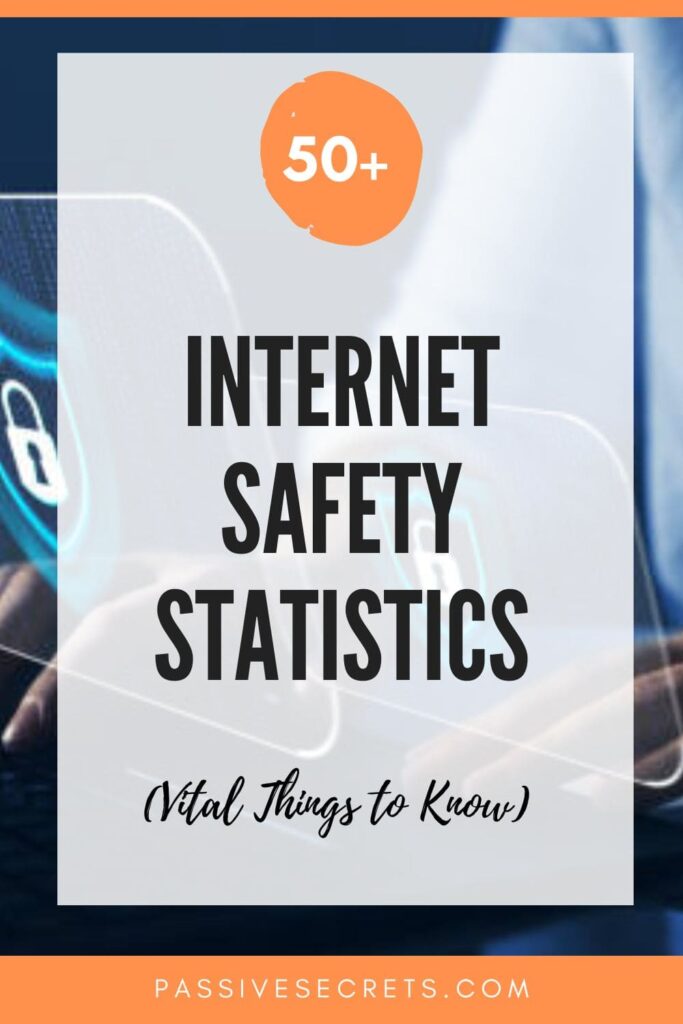
Other Statistics Posts:
- Internet Dangers Statistics
- 52 Video Game Addiction Statistics You Should Know In 2024
- 40+ Useful Procrastination Statistics To Help You In 2024
- 54 Incredible Goal-Setting Statistics To Help You In 2024
- 55+ Useful Black Consumer Spending Statistics (2024 Report)
- 160 Holiday Spending Statistics 2024: Valentine’s Day, Easter, Thanksgiving, and Christmas
- 70 Spotify Statistics: Latest Report on The Music Streaming Platform
- 70 Interesting Love Statistics And Facts
- 65+ Impressive Chess Statistics and Facts To Know in 2024
- 73 Revealing Workplace Distraction Statistics [2024]
- 68 Performance Management Statistics & Trends in 2024 (Full Report)
- 40+ Top Workplace Conflict Statistics You Should Know In 2024
- 47+ Important 4-day Work Week Statistics [2024]
- 45+ Important Communication Skills Statistics & Trends for 2024
- 20 Crucial Body Language Statistics To Know In 2024

